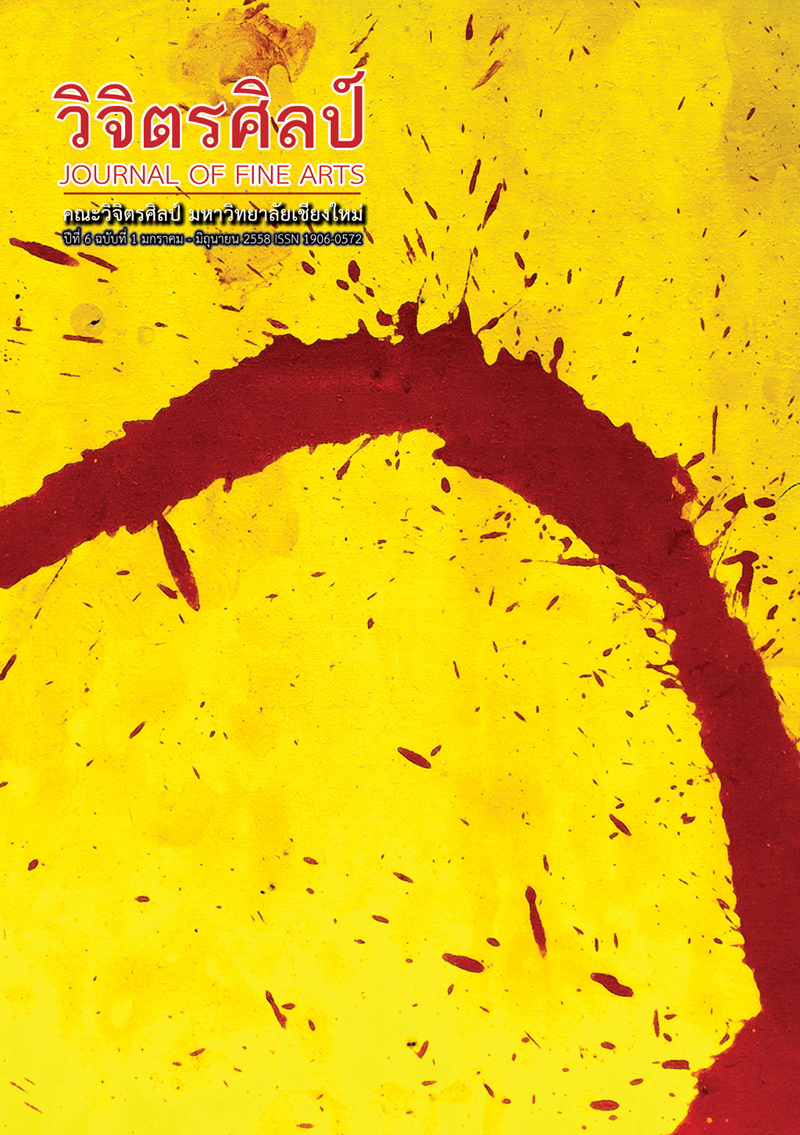ศิลปะร่วมสมัยไทยภายใต้แนวคิดหลังอาณานิคมในทศวรรษที่ 1990
Main Article Content
Abstract
เนื่องจากการศึกษาหลังอาณานิคมนั้นมีแนวคิดที่หลากหลาย งานวิจัยนี้จึงหยิบแนวคิดบางส่วนที่เป็นรูปแบบเชิงภาพรวมแนวคิดหลักของหลังอาณานิคมคือ 1. แนวคิดบูรพาคตินิยม ที่ว่าด้วยการสร้างตัวแทนตะวันออกในสายตาของตะวันตกจากพื้นฐานวิธีคิดแบบทวิลักษณ์ 2. แนวคิดลูกผสม ที่นำมาอธิบายลักษณะการผสมผสานทางวัฒนธรรมเพื่อใช้ต่อรองปรัชญาสารัตถนิยมที่แฝงอยู่ในความคิดอาณานิคม 3. แนวคิดชาติในยุคสมัยใหม่ที่เป็นผลพวงจากลัทธิอาณานิคม
ความสัมพันธ์ระหว่างปฏิบัติการศิลปะของศิลปินทั้ง 3 ท่านกับทฤษฎีหลังอาณานิคมบ่อยครั้งพบว่ามักเกี่ยวข้องกับชีวิตประจำวัน สัญลักษณ์ชาติ อัตลักษณ์ วัฒนธรรมของชาติ เชื้อชาติหรือชาติพันธุ์ โดยใช้กลวิธีการนำเสนอที่หลากหลายในรูปแบบผลงานศิลปะและความคิด ปฏิบัติการศิลปะของฤกษ์ฤทธิ์พบว่ามีแนวคิดการสร้างความเป็นอื่นและการผสมกลมกลืนทางวัฒนธรรม ส่วนปฏิบัติการศิลปะของสุธีและนาวินเป็นทั้งการตอบสนองต่อความคิดชาตินิยม และเป็นการวิพากษ์ ท้าทาย หรือต่อรอง “ความเป็นไทย” หรือชาตินิยมทางวัฒนธรรมกระแสหลักไปพร้อมๆ กัน
Thai Contemporary Art under Postcolonialism in 1990s
The research “Thai Contemporary Art under Postcolonialism in 1990s” focuses on the artistic practice of three Thai artists as Rirkrit Tiravanija, Navin Rawanchaikul and Sutee Kunavichayanont to situating in postcolonial theory.
Even the postcolonial theory have varied kinds of nation. This research aim to choose some pillars of the theory: 1. Orientalism - the image constructing of the East from the West based on binary opposition. 2. Nation of hybridity – the cultural hybridity to negotiating the essentialistof colonial discourse. 3. Nation – a part of Modernism aftermath colonialism.
The relationship between artistic practice of the artists and postcolonial theory fluently relate to everyday live, symbols of nation, identities, nation cultures, race and ethnography in which they‘ve representedmany way in artworks and ideas. Rirkrit’s artistic practice occurs the concept of the others and the cultural hybridity. Navin and Suttee’s artistic practice simultaneously responds, challenges and counters discourse of Thainess or nationalist discourse of Thai culture.


